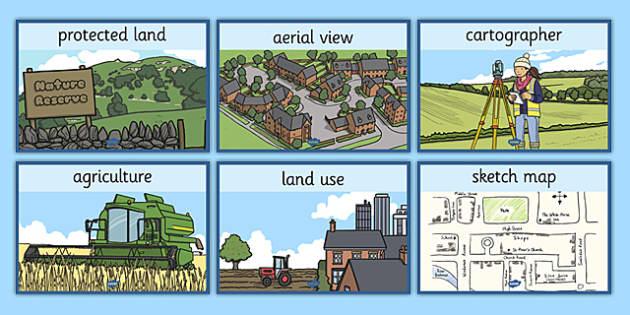Land Use Changes Alter Local Weather Patterns and Air Quality, Study Reveals
In a world where urban expansion and agricultural development are increasingly reshaping landscapes, new research published in ScienceDirect sheds light on the significant impacts of land use and land cover changes on local meteorology and particulate matter (PM) concentrations. As cities grow and forests give way to farmland, the resultant alterations in land cover not only affect the aesthetic of regions but also play a crucial role in environmental health. This study dives into the intricate interactions between land transformation and local weather dynamics, revealing how these changes can exacerbate air quality issues, posing potential health risks to nearby populations. As policymakers and urban planners grapple with sustainable development, understanding the underlying meteorological consequences of land use practices has never been more critical. This article will explore the findings, implications, and urgent need for an integrated approach to land management that considers both ecological balance and community health.
Understanding the Connection Between Land Use Changes and Local Weather Patterns
The interplay between local meteorological conditions and land use changes is a complex yet pressing issue that demands attention. Urbanization, agricultural expansion, and deforestation significantly alter the landscape, which in turn modifies the regional climate. These changes can lead to a variety of consequences on local weather patterns, including:
- Increased temperature: Urban heat islands can arise, causing cities to be warmer than surrounding areas.
- Altered precipitation patterns: Changes in land cover can disrupt natural rainfall distribution and intensity.
- Wind patterns: Increased surface roughness from buildings and vegetation affects wind speed and direction.
Additionally, land use changes impact air quality, particularly the concentration of particulate matter (PM) in the atmosphere. Areas with extensive agricultural practices may experience higher levels of dust and chemical emissions, affecting not just local air quality but also public health outcomes. The following table summarizes key findings on the effects of various land uses on PM levels:
| Land Use Type | Impact on PM Levels |
|---|---|
| Agricultural | Higher due to dust and fertilizers |
| Urban | Increased from vehicles and construction |
| Forested | Lower, acts as a natural filter |
The Role of Vegetation in Mitigating Air Pollution and Its Effects on PM Levels
Vegetation plays a crucial role in improving urban air quality by acting as a natural filter for pollutants, particularly particulate matter (PM), which is a significant environmental concern. Trees and plants absorb harmful gases such as carbon dioxide and volatile organic compounds while simultaneously releasing oxygen through photosynthesis. Moreover, the structure of vegetation, such as leaves and branches, captures PM from the atmosphere, preventing these particles from settling into urban habitats. The presence of green spaces not only promotes better air quality but also enhances the overall urban environment by providing shade, reducing heat islands, and fostering biodiversity.
The effectiveness of vegetation in mitigating air pollution is influenced by various factors, including species type, density, and distribution. Various trees and plants exhibit different capacities to absorb pollutants and intercept particulate matter. For instance, larger leaf surfaces offer more area for trapping particles, while densely planted areas can create more significant reductions in airborne pollutants. The following points summarize the key benefits of integrating vegetation into urban planning:
- Pollutant Absorption: Plants absorb harmful gases and filter particulates from the air.
- Microclimate Regulation: Green areas help moderate temperatures and regulate local weather patterns.
- Noise Reduction: Vegetation can also help diminish urban noise pollution, creating a more peaceful environment.
- Biodiversity Promotion: Green spaces encourage the establishment of habitats for various species, enhancing urban ecosystems.
Strategies for Sustainable Land Management to Enhance Meteorological Resilience
Incorporating sustainable land management practices is essential for enhancing meteorological resilience in the face of ongoing climate change. Effective strategies may include:
- Agroforestry Systems: Integrating trees with crops and livestock to increase biodiversity and improve soil health.
- Conservation Tillage: Reducing soil disturbance to maintain soil structure and enhance water retention.
- Wetland Restoration: Rehabilitating wetlands to improve water management and serve as natural buffers against flooding.
- Crop Rotation: Diversifying crops to enhance soil nutrients and reduce pest pressures, thus fostering resilience.
Adopting these strategies not only mitigates the adverse effects of land-use changes on local weather patterns but also promotes a healthier ecosystem. The following table illustrates the interrelationships between specific land management practices and their benefits:
| Land Management Practice | Benefits |
|---|---|
| Agroecology | Increased biodiversity and reduced chemical usage |
| Permeable Surfaces | Enhanced groundwater recharge and reduced runoff |
| Integrated Pest Management | Lower pest populations with sustainable techniques |
| Sustainable Grazing | Improved soil health and carbon sequestration |
Final Thoughts
In conclusion, the intricate relationship between land use and land cover changes and their impacts on local meteorology and particulate matter levels cannot be overlooked. As urban areas expand and agricultural practices evolve, these alterations are reshaping our atmospheric landscapes, potentially exacerbating air quality issues and altering local climates. As cities continue to grow and environmental pressures mount, understanding these dynamics becomes increasingly crucial for policymakers, urban planners, and environmentalists alike. Addressing the challenges posed by land use changes will require a concerted effort to implement sustainable practices that consider both ecological integrity and human health. Moving forward, targeted research and community engagement will be vital in navigating the complexities of land management and ensuring a resilient future for our communities. For more insights on this pressing issue, visit ScienceDirect.com, where experts are actively exploring the intersections of environment and policy.
